Allionia incarnata, Trailing Windmills
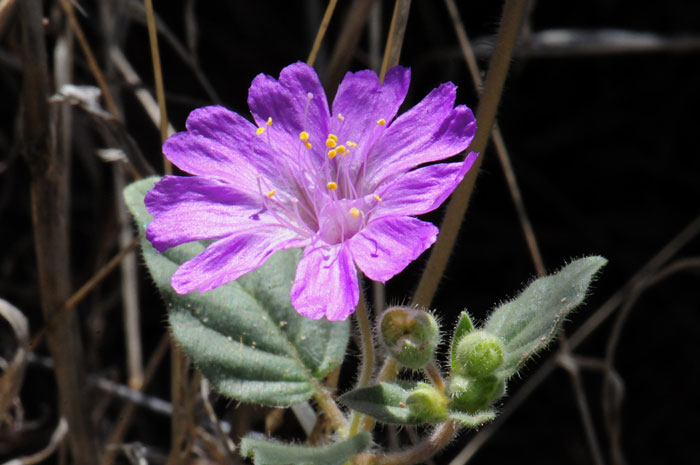
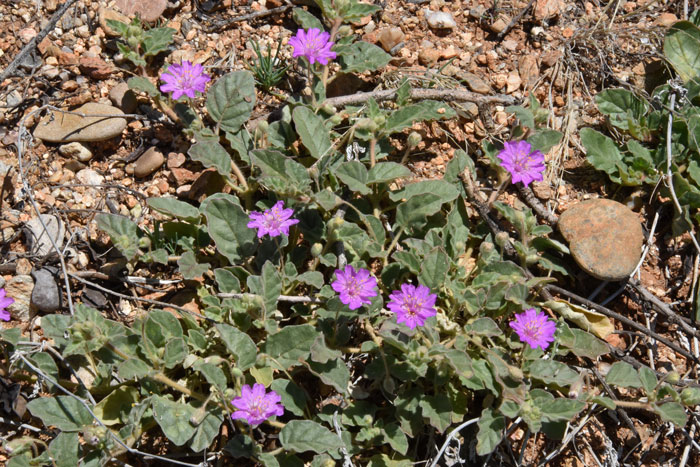
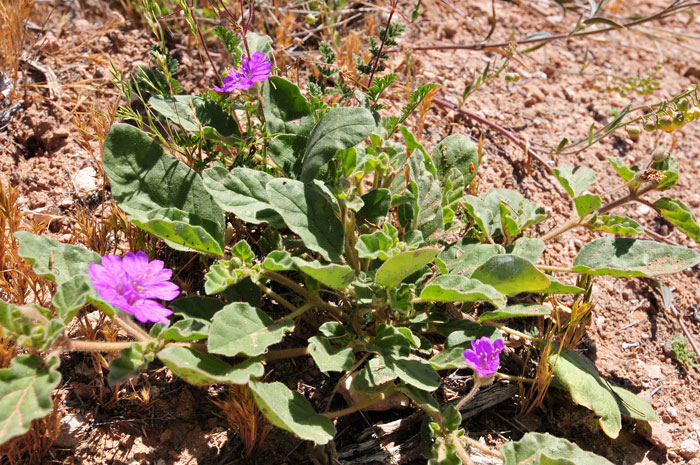
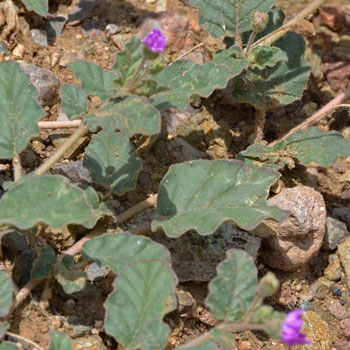
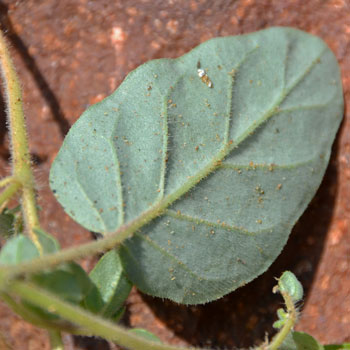
Scientific Name: (Allionia incarnata)
Common Name: Trailing Windmills
Also Called: Trailing Allionia, Trailing Four O'clock, Trailing Four-O'clock; (Spanish: Guapile, Hierba de la Golpe, Hierba de la Hormiga)
Family: Nyctaginaceae, Four O’clock Family
Synonyms: (Allionia incarnata var. nudata)
Status: Native
Duration: Perennial or sometimes annual;
Size: Up to 10 inches tall and trailing for several feet.
Growth Form: Forb/herb; vine-like, long trailing, hairy, sticky stems and leaves, stems often reddish,
Leaves: Dull green, opposite, paired leaves unequal, basal leaves largest and broadest, trailing outer leaves become smaller and narrower, leaf margins, wavy (sinuate).
Flower Color: Deep pink to magenta and rose-purple, occasionally white, perianth "flowers" borne in leaf axils along trailing stem.
Flowering Season: April to October in Arizona and Texas, April to September in California.
Elevation: Up to 5,000 feet, usually lower.
Habitat Preferences: Rocky slopes, plains, mesas and washes mostly in lower desert areas preferring sandy and gravelly soils.
Recorded Range: Trailing Windmills is found in the southwestern United States in; AZ, CA, CO, NM, NV, OK, TX, UT. It is also native to Baja California, Mexico and South America. In Arizona it occurs throughout the state below 6,000 feet.
North America & US County Distribution Map for Allionia incarnata.
U.S. Weed Information: No information available.
Invasive/Noxious Weed Information: No information available.
Wetland Indicator: No information available.
Threatened/Endangered Information: No information available.
Genus Information: 2 species in Allionia in the United States after several taxonomic revisions. Most Allionia species previously have been reclassified to the genus Mirabilis.
The Plant List includes 76 scientific plant names of species rank for the genus Allionia. Of these 3 are accepted species names.
3 varieties of Allionia incarnata in southwest United States, all 3 are found in Arizona:
Allionia incarnata var. incarnata, Trailing Windmills (AZ, CO, NM, OK, TX, UT);
Allionia incarnata var. nudata, Trailing Windmills (AZ, CA, NV);
Allionia incarnata var. villosa, Trailing Windmills (AZ, CA, NM, NV, UT).
Comments: Unlike most members of the Four O'clock family, flowers of Trailing Windmills remain open most of the day. Each symmetric showy "flower" is actually composed of three individual asymmetric flowers. The genus is named after Carlo Allioni (1728 1804), Italian Physician and Professor of Botany.
Trailing Windmills is very similar to Annual Windmills (Allionia choisyi), but, in North America, Trailing Windmills has a much larger perianth ("flower") and may be annual or perennial.
Trailing Windmills is used as a dermatological aid (Navajo, Ramah). See species account from Native American Ethnobotany, University of Michigan, Dearborn.

